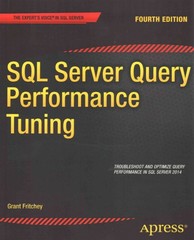Answered step by step
Verified Expert Solution
Question
1 Approved Answer
AFTER YOU REFER TO RAGS ORISMOS , TECHNIQUE , ALGORITHMS USED AND UTILITY THEN produced a similar text based on the current literature. the text
AFTER YOU REFER TO RAGS ORISMOS TECHNIQUE ALGORITHMS USED AND UTILITY THEN produced a similar text based on the current literature. the text has embedded references and bibliography
In the context of vector integrations, yes, integrations and vectors are the same thing. Both refer to numerical representations of data, where each data point is represented by a vector in a highdimensional space.
The term "vector" simply refers to a series of numbers with a certain dimension. In the case of vector embeddings, these vectors represent any of the data points listed above in continuous space. In contrast, "embedding" specifically refers to the technique of representing data as vectors in such a way as to capture meaningful information, semantic relationships, or contextual features. Embeddings are designed to capture the underlying structure or properties of data and are typically learned through algorithms or training models.
While integrals and vectors can be used interchangeably in the context of vector integrals, "integrals" emphasize the concept of representing data in a meaningful and structured way, while "vectors" refer to the numerical representation itself.
How are vector embeddings created?
Vector embeddings are created through a machine learning process where a model is trained to transform any of the pieces of data listed above as well as others into numerical vectors. Here's a quick overview of how it works:
First, gather a large dataset that represents the type of data you want to create embeds for, such as text or images.
Next, you will preprocess the data. This requires cleaning and preparing the data by removing noise, normalizing text, resizing images, or various other tasks depending on the type of data you are working with.
You will select a neural network model that is appropriate for your data objectives and feed the preprocessed data into the model.
The model learns patterns and relationships within the data by adjusting its internal parameters during training. For example, he learns to associate words that often appear together or to recognize visual features in pictures.
As the model learns, it creates numerical vectors or embeddings that represent the meaning or features of the data. Each data point, such as a word or an image, is represented by a unique vector.
At this point, you can evaluate the quality and effectiveness of integrations by measuring their performance on specific tasks or by using humans to evaluate how similar the given results are.
Once you've judged the integrations to be working well, you can put them to work by analyzing and editing your datasets.
What does vector integration look like?
The length or dimensionality of the vector depends on the specific embedding technique you are using and how you want the data to be represented. For example, if you are creating word embeddings, they will often have dimensions ranging from a few hundred to a few thousand which is too complex for humans to draw visually. Sentence or document embeddings may have higher dimensions because they capture even more complex semantic information.
The vector embedding itself is usually represented as a sequence of numbers, such as Each number in the sequence corresponds to a specific attribute or dimension and contributes to the overall representation of the data point. That said, the actual numbers within the vector are meaningless by themselves. It is the relative values and relationships between numbers that capture the semantic information and allow algorithms to efficiently process and analyze the data.
Applications of vector integrations
Vector embeddings have a wide range of applications in various fields. Here are some common ones you may encounter:
Natural language processing NLP makes extensive use of vector embedding for tasks such as sentiment analysis, named entity recognition, text classification, machine translation, question answering, and document similarity. Using embeddings, algorithms can understand and process textrelated data more efficiently.
Step by Step Solution
There are 3 Steps involved in it
Step: 1

Get Instant Access to Expert-Tailored Solutions
See step-by-step solutions with expert insights and AI powered tools for academic success
Step: 2

Step: 3

Ace Your Homework with AI
Get the answers you need in no time with our AI-driven, step-by-step assistance
Get Started


